As I rounded the final bend of the winding path, Orvieto appeared before me, seemingly floating on a cloud 325 meters above the valley floor. This ancient Italian hill town sits atop a massive volcanic tufa rock, creating one of the most dramatic settings I’ve ever encountered in my travels.
The unique position on this volcanic plateau made Orvieto virtually impregnable in ancient times. Various civilizations chose this spectacular location for settlement.
The climb to reach this hidden gem of Umbria was challenging but worth every step. Looking up at the sheer cliff faces of the tufa rock, I understood why Orvieto has captivated visitors for centuries.
The town doesn’t just offer stunning views of the surrounding countryside. It’s a place where history and geology intertwine in fascinating ways.
My heart raced with anticipation as I entered the medieval streets, knowing that below the surface lies another marvel – an underground city carved into the same volcanic rock. This network of caves, tunnels, and chambers shows how Orvieto’s residents throughout history used their unique geological setting to their advantage.
The volcanic foundation isn’t just what Orvieto stands on – it’s an integral part of the town’s identity and charm.
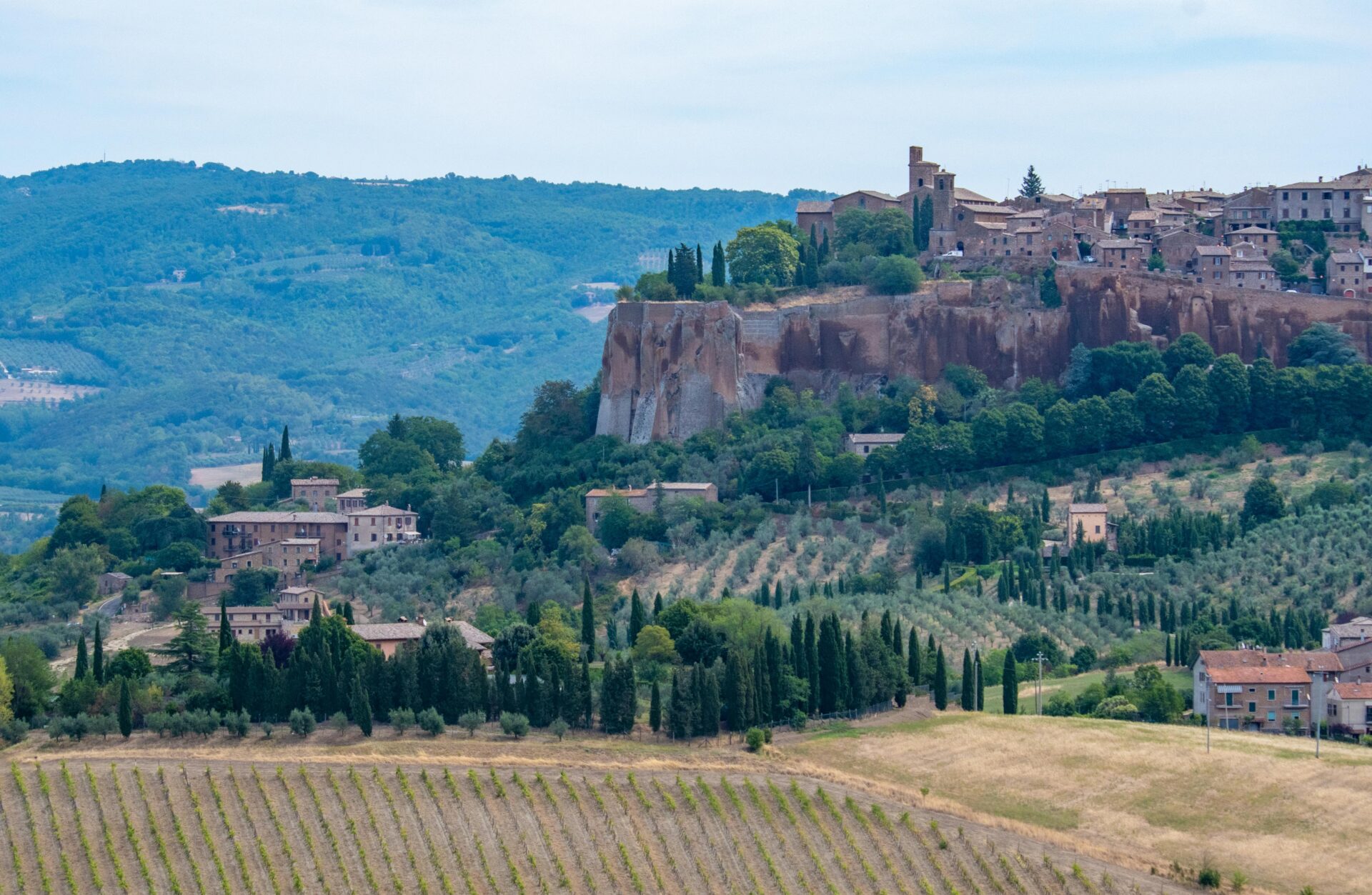
Approaching Orvieto: The Funicular and La Rupe
Getting to Orvieto involves one of the most memorable transportation experiences in Italy. The dramatic volcanic rock formation known as La Rupe forms a natural pedestal for this ancient Umbrian town, creating both a defensive advantage and a breathtaking approach for modern visitors.
The Thrilling Funicular Ride
The funicular railway connecting Orvieto’s train station to the hilltop town offers an unforgettable introduction to this medieval gem.
I watched through the windows as we steadily climbed the steep grade, gaining altitude with each moment. The modern cable car system efficiently carries visitors up the dramatic slope in just a few minutes.
The ride itself provides spectacular views of the Umbrian countryside. I found myself torn between watching the approaching town above and the expanding vista below.
When planning your visit, know that the funicular runs frequently throughout the day. A one-way ticket costs just a few euros, making it both practical and economical.
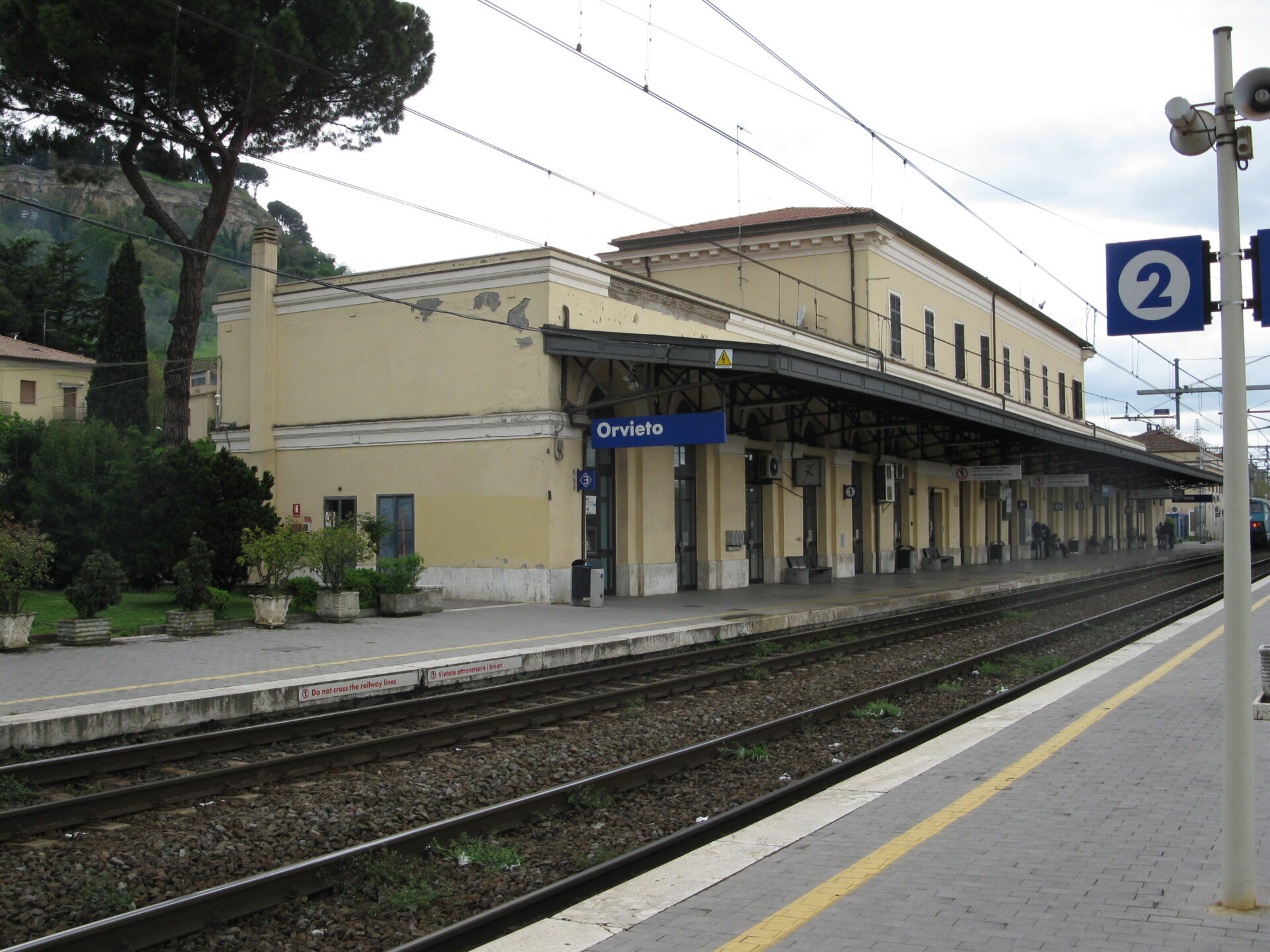
La Rupe’s Centuries of Erosion
La Rupe, the massive tufa rock that supports Orvieto, tells a fascinating geological story. This volcanic formation has been shaped by natural erosion for thousands of years, creating the dramatic cliff faces visible today.
Walking around Orvieto, I noticed how the town seems to merge with the rock itself. Medieval builders incorporated the natural formation into their architecture, creating a seamless blend of nature and human design.
The “Anello della Rupe” or Ring of Rock path circles the entire base of La Rupe. This 5-kilometer trail offers stunning views of both the rock formation and the surrounding Umbrian landscape.
Erosion continues to shape La Rupe even now. Local conservation efforts work to preserve this natural wonder against the ongoing effects of weather and time.
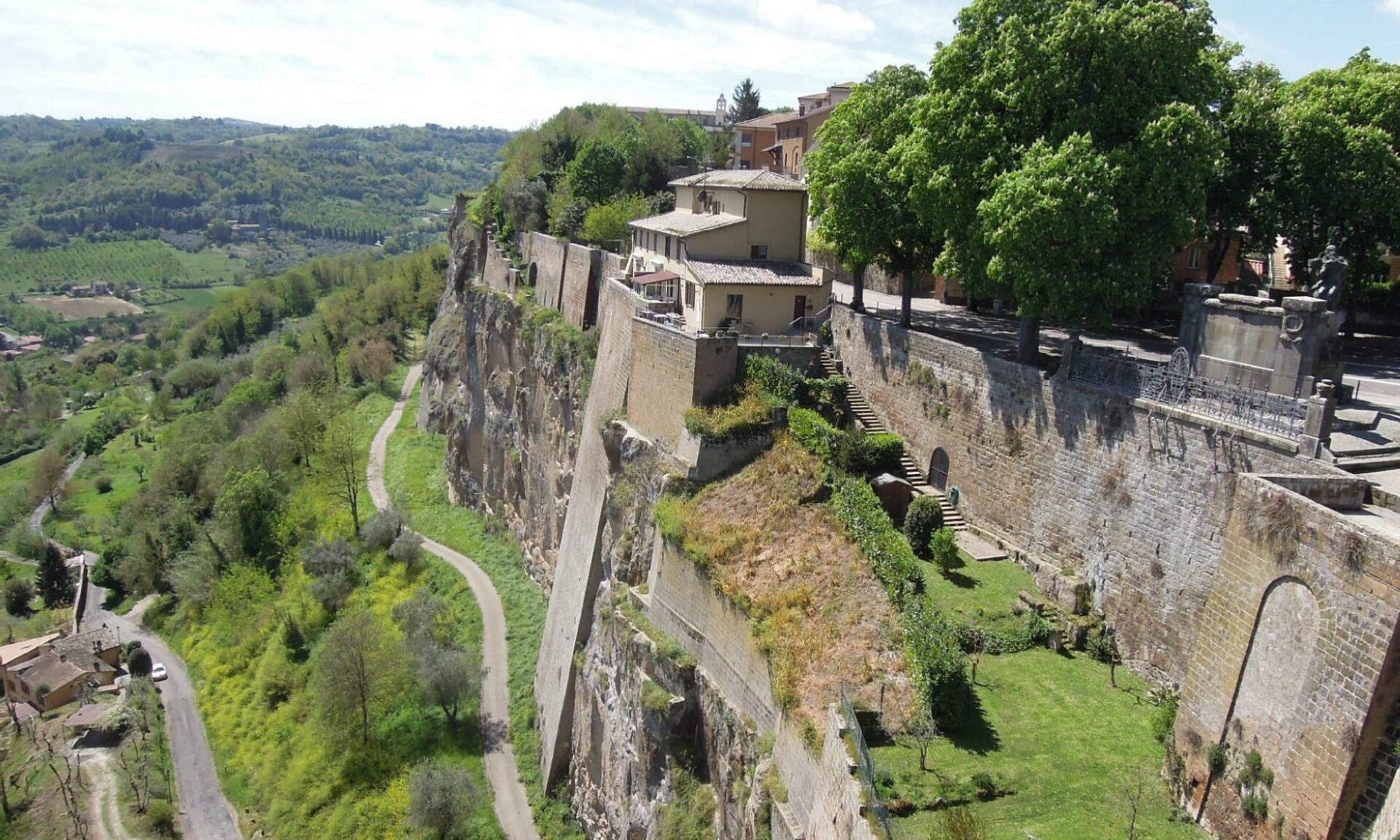
Discovering History: Etruscans and the Duomo di Orvieto
Standing atop this massive volcanic rock, I found myself walking through thousands of years of history. The ancient Etruscans and medieval craftsmen have left their mark on Orvieto in ways that continue to amaze visitors today.
Etruscan Legacy in Orvieto
The Etruscans chose this site brilliantly. Their settlement of Velzna (or Volsinii) sat protected on this tufa rock with steep cliffs providing natural defense. Walking through Orvieto today, I could still feel their presence beneath my feet.
The underground network of caves truly fascinated me. There are approximately 1,200 caves dug into the volcanic rock, many dating back to Etruscan times.
These weren’t just simple holes – they were sophisticated spaces used for accessing natural resources.
I joined a guided tour of the underground caves, where our guide explained how generations of inhabitants continued to use and expand these spaces. The Etruscans’ engineering skill impressed me – they created an entire underground city of sorts!
Archaeological artifacts throughout Orvieto showcase their advanced civilization. Pottery, tools, and religious items on display helped me understand daily Etruscan life in this hilltop sanctuary.

The Architectural Splendor of Duomo di Orvieto
The Duomo di Orvieto took my breath away from my first glimpse. This 13th-century cathedral stands as one of Italy’s most magnificent Gothic masterpieces.
Its façade sparkled in the sunlight, with golden mosaics catching light at different angles. The intricate carvings and relief sculptures told biblical stories that even I, with limited art knowledge, could appreciate.
The black and white striped marble pattern reminded me of Siena’s cathedral, yet Orvieto’s had its own distinct character. Construction began in 1290 but took nearly three centuries to complete.
What struck me most was how the cathedral seemed to grow organically from the volcanic rock itself. The materials used – local stone and imported marble – created a harmony with the landscape that modern buildings rarely achieve.
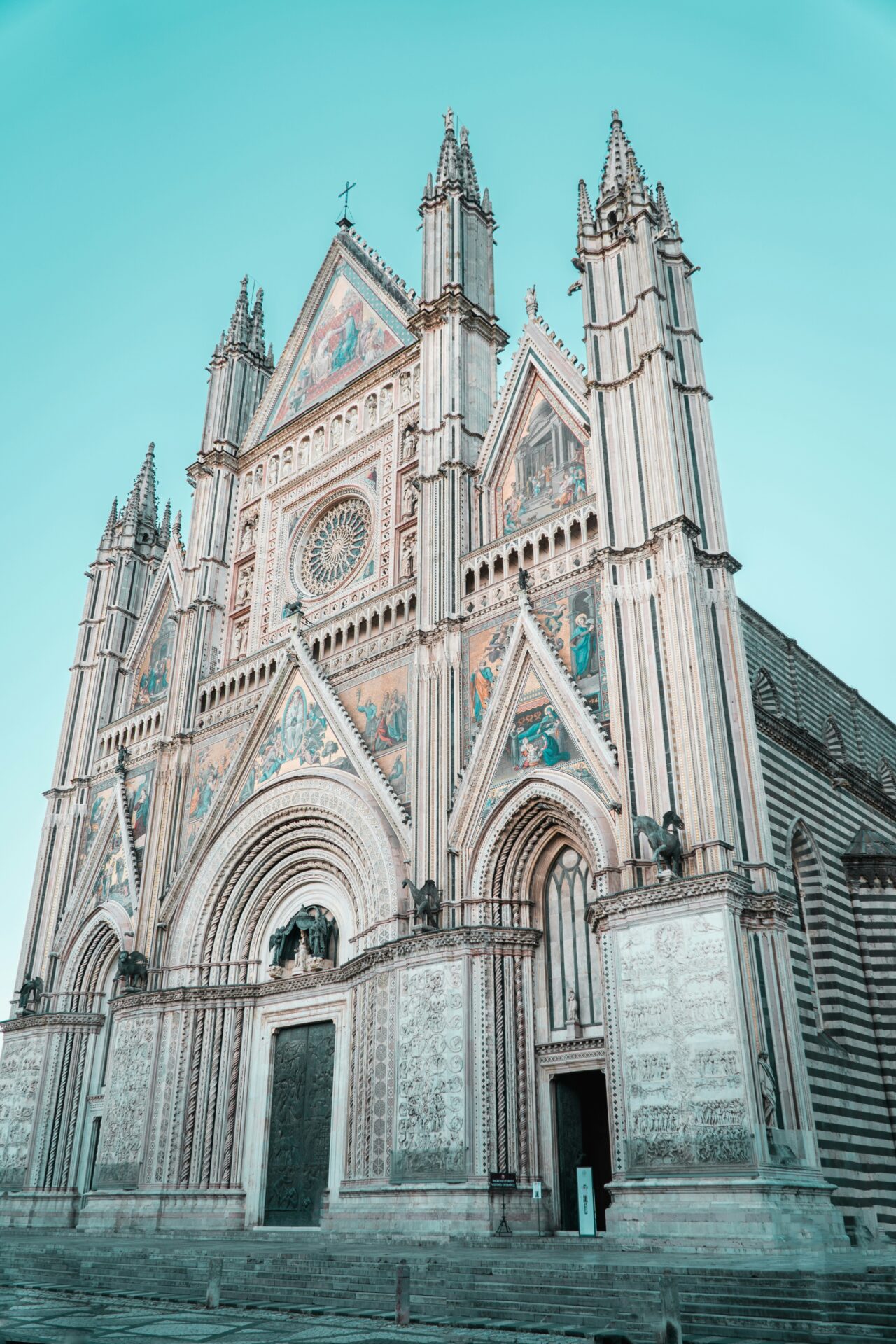
Frescoes and Mosaics: Renaissance Art up Close
Inside the cathedral, the San Brizio Chapel left me speechless. Luca Signorelli’s frescoes depicting the End of the World and Last Judgment cover the walls in vivid detail. His technical skill and imagination were stunning.
The colors remained surprisingly vibrant despite being painted in the late 1400s. I noticed how Signorelli’s work influenced later Renaissance masters like Michelangelo.
Beyond the famous frescoes, I discovered smaller artistic treasures throughout the Duomo. Delicate mosaics decorated chapel ceilings, while marble sculptures adorned altars and doorways.
What made this experience special was the lack of crowds. Unlike Rome’s packed attractions, I could take my time here, examining details and absorbing the artistic brilliance at my own pace.
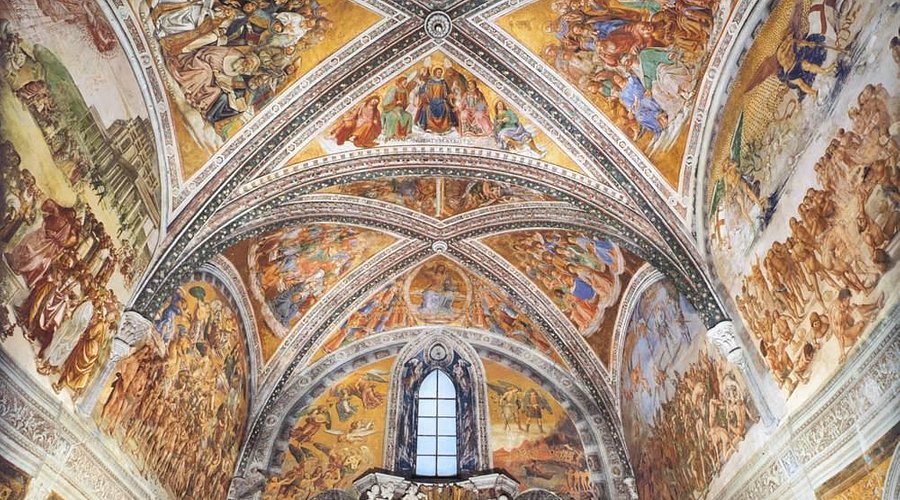
Culinary Delights and Local Crafts
Orvieto’s food and artisan scene captured my heart as much as its dramatic clifftop setting. The combination of rustic Umbrian cuisine and centuries-old craft traditions creates an authentic Italian experience that engages all the senses.
Trattoria Tales: A Taste of Umbria
I discovered a small family-run trattoria tucked away on a narrow cobblestone street, where the menu featured handwritten daily specials. The owner, Giuseppe, proudly explained that most ingredients came from within 20 miles of Orvieto.
My lunch began with a platter of local salami, each variety aged differently and paired with crusty bread drizzled with Umbrian olive oil. The flavors were bold yet balanced—nothing like what I’d tasted back home.
For the main course, I enjoyed handmade pasta with wild boar ragù, a regional specialty. The rich sauce had simmered for hours, Giuseppe explained, while refilling my glass with local Orvieto Classico wine.
What struck me most was how these trattorias maintain generations-old recipes. Each dish tells a story of this volcanic hill town’s culinary heritage.

Ceramics and Olive Oil: Artisan Treasures
Walking Orvieto’s streets after lunch, I stumbled upon artisan workshops where craftspeople continue traditions dating back centuries.
In one ceramics studio, I watched an elderly woman hand-painting intricate designs on plates, each stroke precise and purposeful. The studio owner showed me how they use techniques passed down through generations. Each piece reflects Orvieto’s distinctive style—vibrant yellows and blues inspired by the landscape.
Another memorable stop was a small olive oil producer’s shop. The owner offered tastings from different harvests, explaining how volcanic soil gives their oil a distinctive peppery finish.
I couldn’t resist purchasing a small ceramic bottle filled with fresh olive oil as a souvenir. The shopkeeper wrapped it carefully, explaining how to properly store it to preserve its complex flavors.
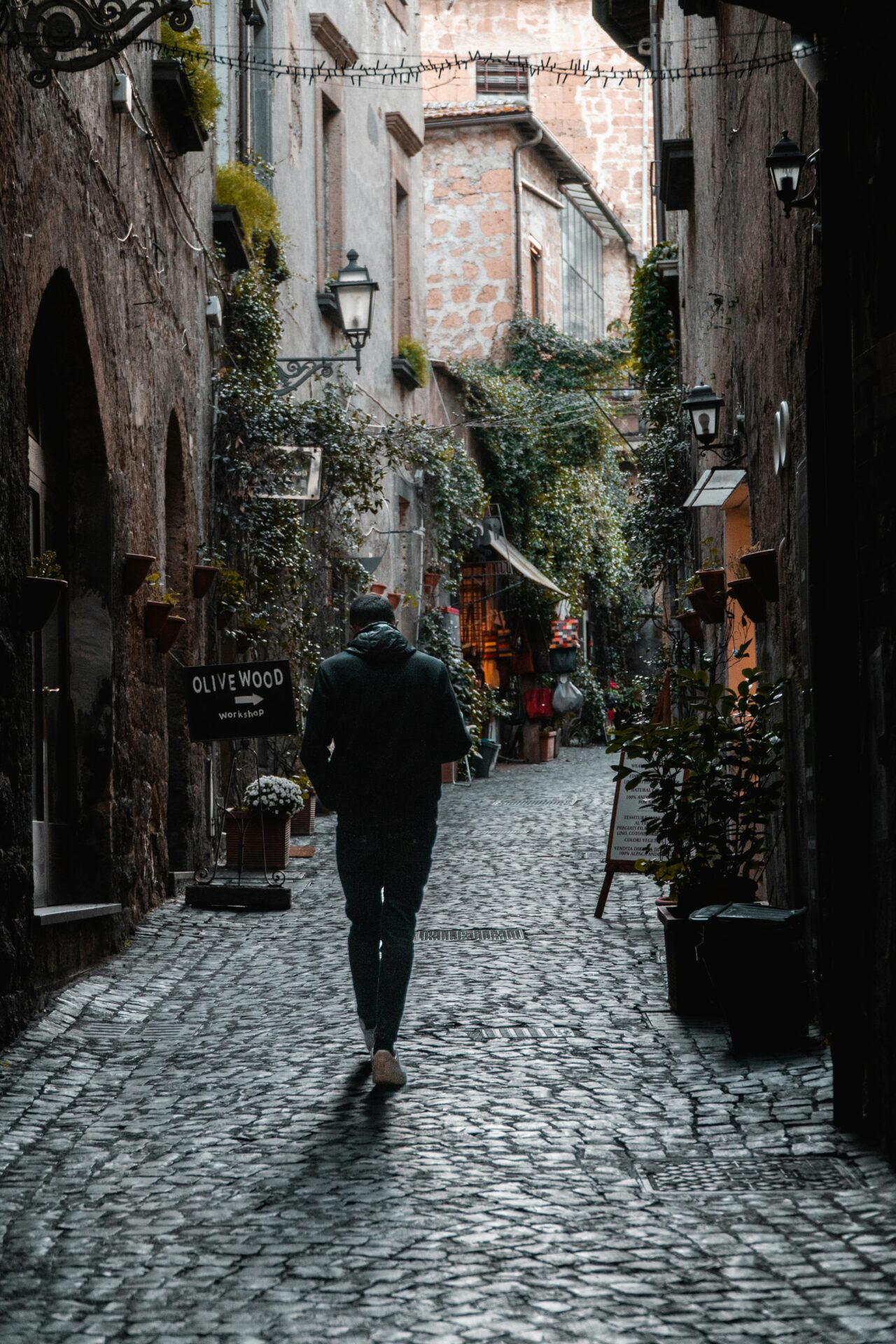
Breathtaking Views and Religious Sites
Orvieto offers some of the most stunning vistas in all of Umbria, alongside deeply meaningful religious experiences that connect visitors to the town’s medieval roots.
Torre del Moro: Panoramic Views of Umbria
I climbed the ancient Torre del Moro on a clear spring morning, and the 47-meter climb was absolutely worth the effort. This medieval clock tower sits at the intersection of Corso Cavour and Via del Duomo, offering the perfect vantage point for 360-degree views.
From the top, I gazed across terracotta rooftops that seemed to float above the lush Umbrian countryside. The patchwork of vineyards and olive groves stretched toward distant hills, creating a landscape that looked like a Renaissance painting come to life.
The tower’s name means “Tower of the Moor,” though its origins have nothing to do with Moorish design. It dates back to the 13th century and provides the best panoramic viewpoint in town.
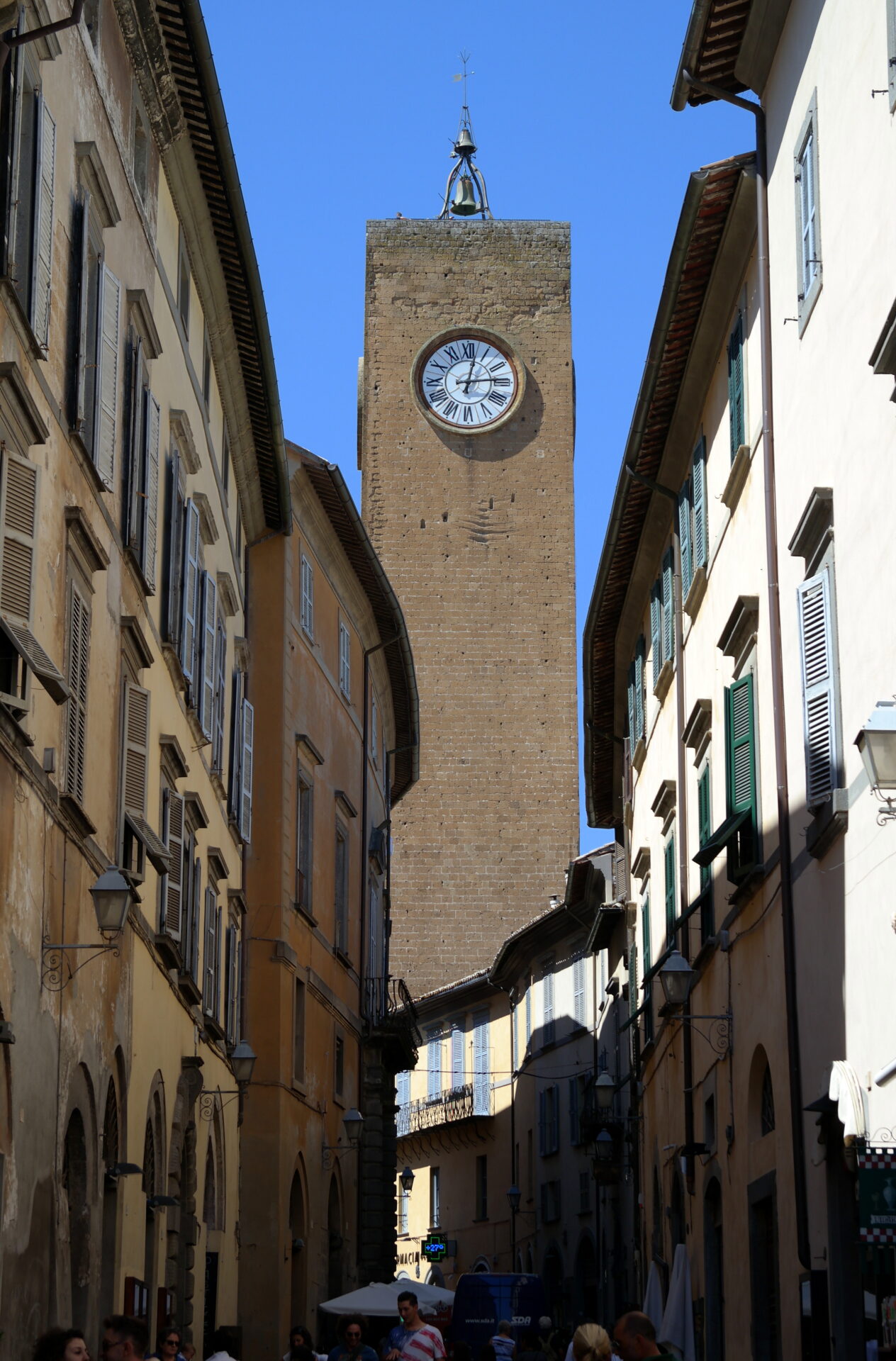
Spiritual Journeys: From Basilicas to Feast Celebrations
The magnificent Duomo di Orvieto left me speechless with its striking black and white marble façade. This Gothic masterpiece took nearly three centuries to complete and houses religious treasures that attract pilgrims and art lovers alike.
Inside, I discovered the Chapel of San Brizio with its incredible frescoes by Luca Signorelli depicting the end of the world. The attention to detail and dramatic expressions on the figures’ faces made me linger much longer than I’d planned.
My visit coincided with preparations for the Feast of Corpus Domini, a celebration dating back to the 13th century. Local families weave intricate flower carpets along procession routes, continuing traditions that have remained unchanged for centuries.
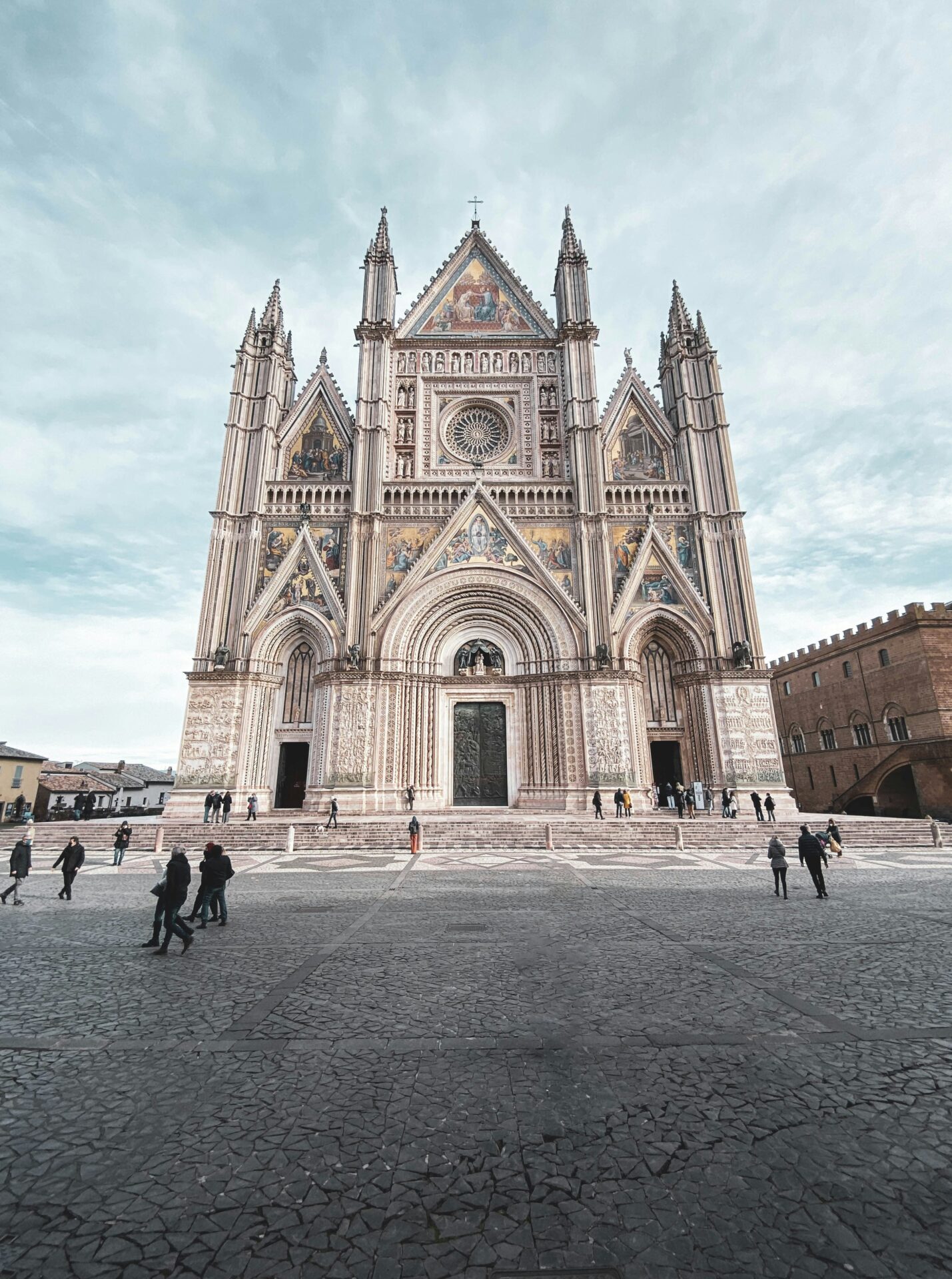
The Hidden Depths of Orvieto
Beneath the charming medieval facades of Orvieto lies a fascinating underground world that tells stories of ancient civilizations and remarkable engineering. These subterranean wonders reveal how the city’s inhabitants adapted to their volcanic environment over thousands of years.
Orvieto Underground: Beneath the Hill Town
Walking through Orvieto’s underground tunnels felt like stepping back in time. This labyrinth of caves and passages was carved into the soft tufa rock by Etruscans and later expanded by medieval residents.
I was amazed to discover over 1,200 tunnels, wells, and chambers hidden beneath the city streets.
Our guide explained how these underground spaces served many purposes throughout history. Families created cellars for storing olive oil and wine in perfect natural refrigeration. Some chambers were used as workshops for pottery and olive pressing.
The most fascinating part was seeing the Etruscan wells. These ancient people engineered sophisticated water systems long before modern plumbing. The rectangular niches carved into walls once held lamps that lit these dark passageways.
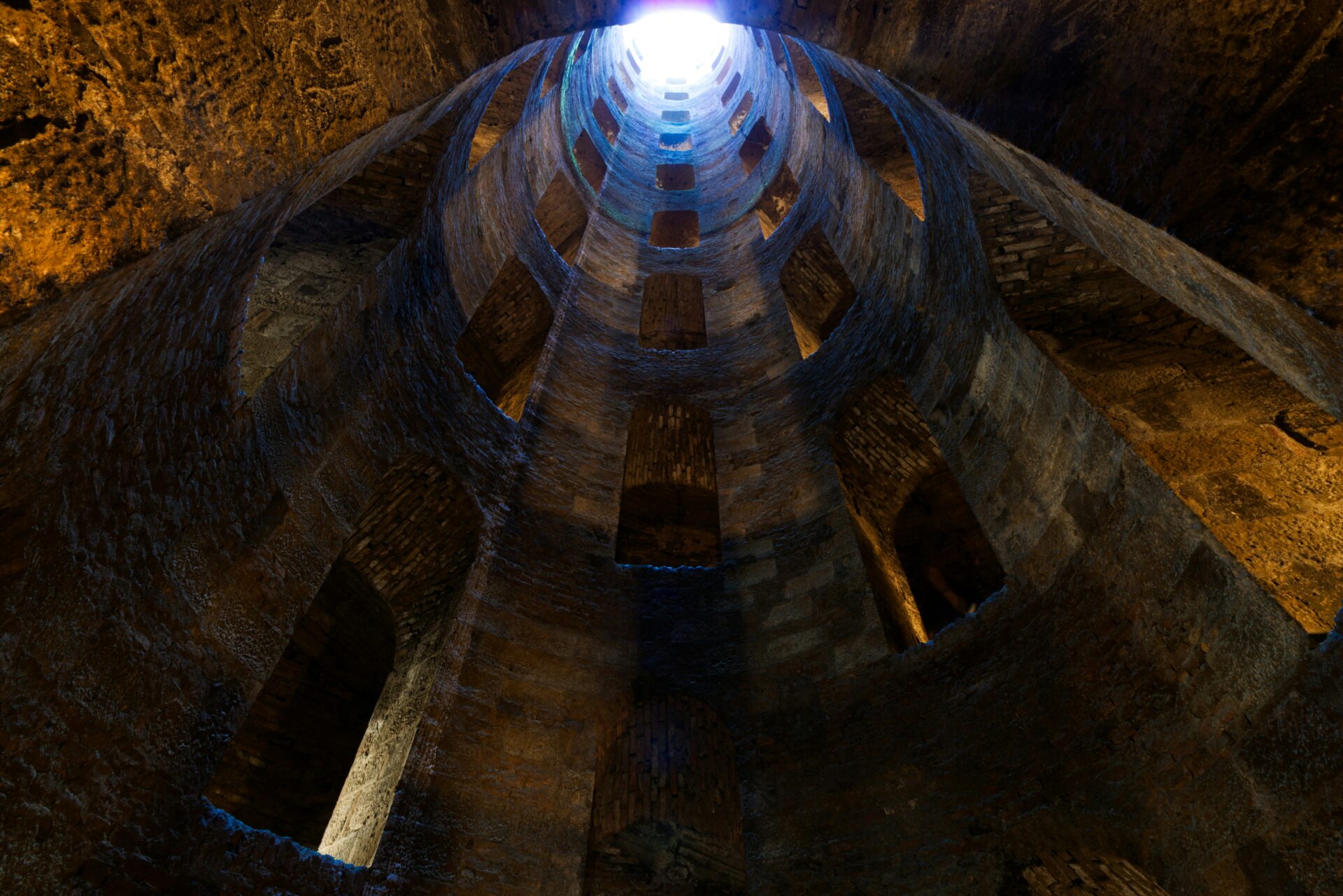
Mysteries of Pozzo di San Patrizio
The Pozzo di San Patrizio (St. Patrick’s Well) took my breath away with its ingenious double helix design.
Built in the 16th century, this incredible well plunges 175 feet into the volcanic rock. The two spiral staircases allowed donkeys to carry water up without crossing paths with those going down.
I counted 248 steps as I descended into the cool darkness.
Windows cut into the central column provided just enough light to see the moisture-slicked walls. The well was commissioned by Pope Clement VII after he fled to Orvieto during the Sack of Rome in 1527.
The engineering precision is remarkable – perfectly symmetrical with 72 windows illuminating the double helix structure.
At the bottom, I gazed into the clear water that still collects in this marvel of Renaissance engineering.

